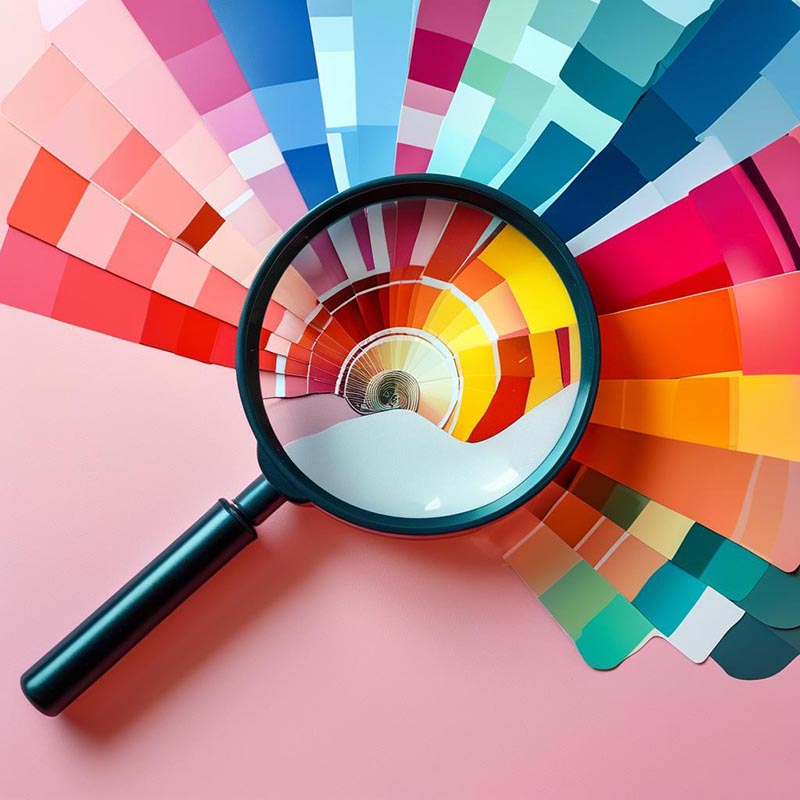Color Management in Drawstring Bag Production
In the production of drawstring bags, color accuracy is one of the key factors that determine whether an order succeeds or fails. Discrepancies between Pantone color codes provided by designers and the actual printed results often trigger trade disputes—especially when materials vary, such as canvas versus Oxford fabric. From ink absorption differences to ambient temperature and humidity, every stage of the production process poses a potential risk of color distortion. This article delves into the technical challenges of color conversion in drawstring bag printing. Supported by industry data and real-world case studies, it outlines comprehensive color protection strategies from digital design to finished products, helping manufacturers establish scientific color management systems and significantly reduce commercial losses caused by color inconsistencies.
Three Essential Basics to Understand
-
- Pantone Colors ≠ Printed Colors
- Pantone guides are standardized color references. In contrast, printing uses CMYK (cyan, magenta, yellow, black) color mixing, which is similar to watercolor blending and inevitably results in some deviation.
- Fabrics Absorb Color Differently
- The same color may appear differently when printed on canvas versus polyester. Thicker fabrics often appear darker than thinner ones.
- Waterproof Coatings Alter Color
- Drawstring bags with waterproof coatings typically appear about half a tone lighter than the original design draft.
Top 5 Causes of Color Inaccuracy
- Ink Absorption Rate Variance
- Oxford fabric has an average ink penetration depth of 0.28 mm, compared to 0.15 mm for canvas—this results in a 12–18% drop in color saturation.
- Solution: Conduct a pre-print ink absorption test (drip 1 ml of ink and observe diffusion rate).
- Registration Inaccuracy
- Standard screen printers have a registration tolerance of ±0.3 mm, which leads to blurred edges.
- Solution: Upgrade to automatic screen printers with CCD alignment for improved precision (±0.1 mm).
- Ambient Temperature and Humidity
- At humidity levels above 70%, ink drying slows down, causing color bleeding.
- Control Standard: Temperature 25 ± 3°C / Humidity 50 ± 5% (use industrial dehumidifiers as needed).
- Ink Batch Variation
- Cyan ink from different suppliers may vary by ΔE 3.2—noticeable to the naked eye.
- Solution: Maintain an ink sample archive (store 200 ml from each batch for reference).
- Color Fading from Light Exposure
- After 30 days of direct sunlight, red tones may fade by up to 15%, while blue tones fade by around 8%.
- Preventive Measure: Add UV-resistant agents (adds approx. ¥0.20 per meter in cost).

Four Simple Yet Effective Testing Methods
- Proofing Comparison
- After receiving the design file, print a palm-sized color block on scrap fabric. Compare it with the Pantone color under natural light.
- Smartphone Color Check
- Take photos of the sample and color card, then check RGB values in photo editing software. If cyan (C) or magenta (M) differs by more than 15%, adjustments are needed.
- Soak Test
- Soak the printed sample in water and let it dry. Observe whether the color changes by more than 20%—especially useful for waterproof bag orders.
- Fold-and-Inspect Method
- Fold the fabric and inspect the crease. If the fold line appears significantly lighter, ink penetration is insufficient.
Three Key Reminders for Sales Representatives
- Ask One More Question
- Confirm whether the client accepts ±10% color deviation and specify in the contract: "Final color subject to physical sample approval by the factory."
- Prepare for Contingencies
- Stock corrective inks in five common colors—true red, navy, forest green, coffee brown, and pure black—for quick touch-ups in case of color issues.
- Keep a Traceable Sample Record
- Archive every proof sample with a date label. If disputes arise, you can trace and verify the root cause.
Solutions to Common Color Issues
- Color too light: Add 5–8% thickener to the ink.
- Color appears grayish: Reduce black ink ratio and replace with dark blue.
- Uneven color: Use a lint roller to clean the fabric surface before printing.
- Color changes after water exposure: Extend post-print drying time (e.g., bake at 60°C for 3 minutes).
Building a Multi-Dimensional Color Assurance System
Given the technical challenges of translating Pantone colors to printed colors, drawstring bag manufacturers must establish a multi-dimensional color assurance mechanism. By identifying fabric characteristics, optimizing printing parameters, and combining digital simulations with physical verification, color variance can be kept within acceptable ranges. Meanwhile, contracts should include well-defined risk clauses, client communications should follow professional phrasing, and testing equipment must be appropriately deployed.
Factories are advised to regularly update a Color Variation Case Library, turning production experience into standardized solutions. In global trade, accurate color reproduction is not only a reflection of technical capability but also the foundation for long-term client trust. When color deviations are consistently controlled within ΔE ≤ 3, a manufacturer’s reputation becomes its strongest competitive edge.



 We like to do design according to all the customers' requirements, or offer them our new designs. With strong OEM/ODM capabilities, we can fill your sourcing demands.
We like to do design according to all the customers' requirements, or offer them our new designs. With strong OEM/ODM capabilities, we can fill your sourcing demands.